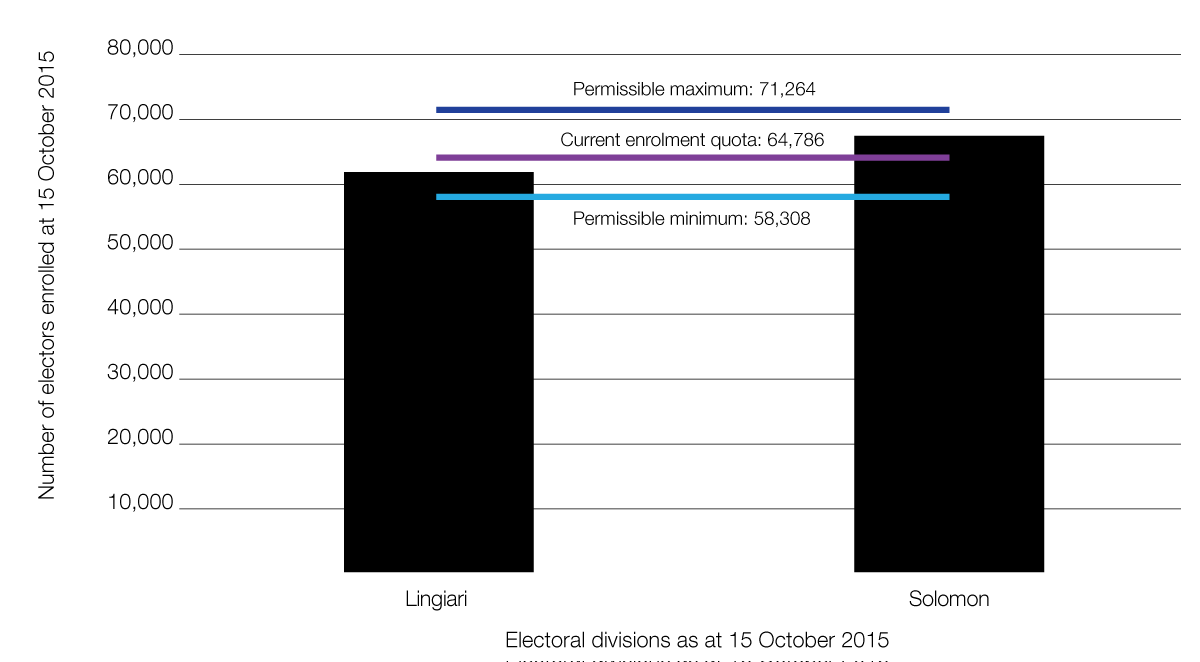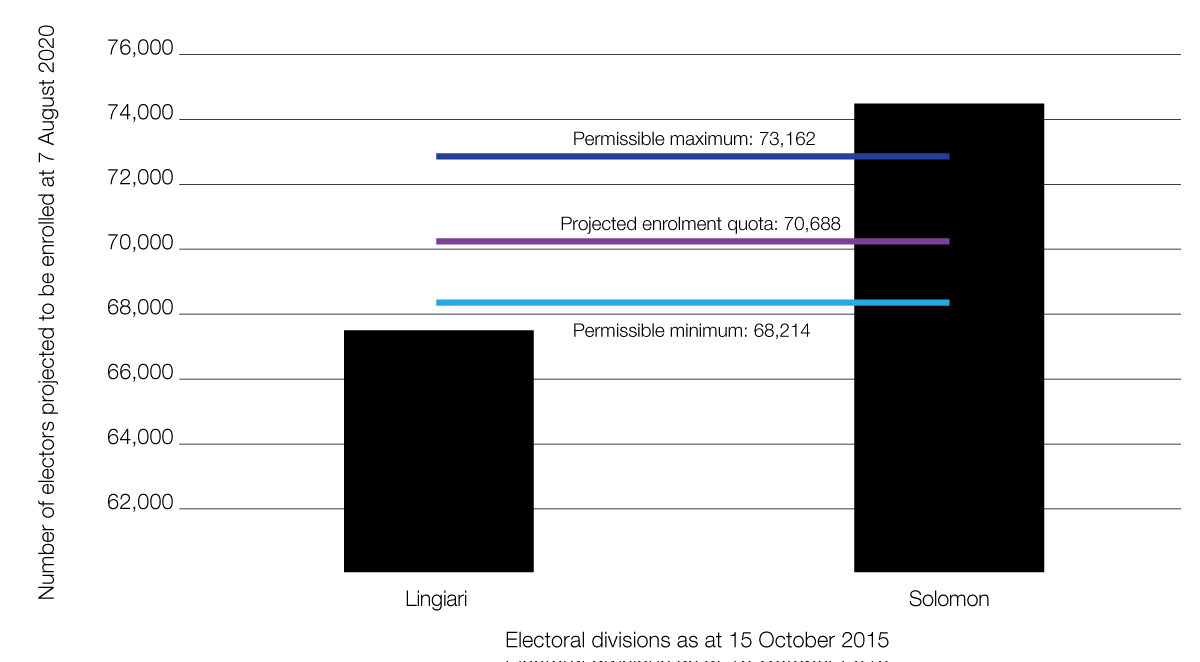Australian Electoral Commission


The Northern Territory is undergoing a redistribution because more than seven years have elapsed since the last redistribution.
Sub-section 59(2) of the Commonwealth Electoral Act 1918 (the Electoral Act) specifies that a redistribution process should be undertaken when:
The most recent redistribution of the Northern Territory was determined on 19 September 2008. A redistribution was therefore required to commence within 30 days of 19 September 2015.
The redistribution formally commenced on 15 October 2015.
The boundaries of the electoral divisions will definitely change. There are two numerical ranges the Electoral Act specifies for electoral divisions:
On the boundaries in place when the redistribution started on 15 October 2015, the number of electors enrolled in both the Divisions of Lingiari and Solomon meet the requirement to be not more than plus or minus 10 per cent of the current enrolment quota (see Figure 1). However, neither electoral division meets the requirement to be not more than plus or minus 3.5 per cent of the projected enrolment quota at the projection time, (see Figure 2) as:
As a consequence, the Redistribution Committee will be required to adjust the boundaries of both current electoral divisions so that the requirements of the Electoral Act can be met.
Figure 1: Current Divisions of Lingiari and Solomon – enrolment as at 15 October 2015, current enrolment quota and permissible range of electors

Click on graph for a larger view
Figure 2: Current Divisions of Lingiari and Solomon – projected enrolment as at 7 August 2020, projected enrolment quota and permissible range of electors

Click on graph for a larger view
The names of the electoral divisions may or may not change.
Individuals and organisations are able to propose alternative names for electoral divisions at two stages of the redistribution process:
The Redistribution Committee will consider any ideas it receives in suggestions and comments on suggestions advocating a change of name for an electoral division and in their proposed redistribution will indicate whether it has or has not proposed changing the name of an electoral division, together with reasons for the proposal.
Individuals and organisations can object to the Redistribution Committee's proposed names of electoral divisions. Any ideas received in objections and comments on objections advocating a change of name for an electoral division will be considered by the augmented Electoral Commission for the Northern Territory, who is ultimately responsible for determining the names of the electoral divisions in the Northern Territory.
Under section 56A of the Electoral Act, until such time as the Territory of the Christmas Islands or the Territory of Cocos (Keeling) Island is entitled to a member of the House of Representatives, each Territory is to be included in an electoral division in the Northern Territory.
As part of a determination on 13 November 2014 of the number of members of the House of Representatives to which each state and territory will be entitled at the next federal general election, it was determined that:
Christmas Island and Cocos (Keeling) Island will therefore need to be located in the same electoral division in the Northern Territory.
When the redistribution commenced on 15 October 2015, Christmas Island and Cocos (Keeling) Island were located in the Division of Lingiari.
Changes to electoral divisions as a result of this redistribution will apply from the day on which a notice of determination is published in the Commonwealth Notices Government Gazette. This notice will be published on 7 February 2017.
The electoral divisions which will apply at the 2016 federal election will therefore be the same as those which applied at the 2013 federal election.